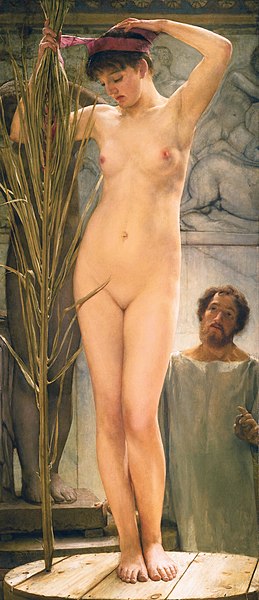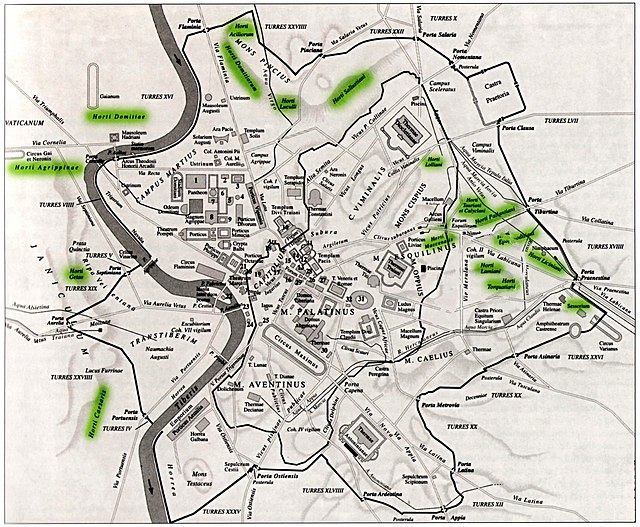The Esquiline Venus, depicting the goddess Venus, is a smaller-than-life-size Roman nude marble sculpture of a female in sandals and a diadem headdress. It is widely viewed as a 1st-century AD Roman copy of a Greek original from the 1st century BC. It is also a possible depiction of the Ptolemaic ruler Cleopatra VII.
Esquiline Venus
A Sculptor's Model, by Alma-Tadema, 1877
"Diadumene", by Poynter
Another torso of this type (Louvre)
The Horti Lamiani was a luxurious complex consisting of an ancient Roman villa with large gardens and outdoor rooms. It was located on the Esquiline Hill in Rome, in the area around the present Piazza Vittorio Emanuele. The horti were created by the consul Lucius Aelius Lamia, a friend of Emperor Tiberius, and they soon became imperial property. They are of exceptional historical-topographical importance. Along with other ancient Roman horti on the Quirinal, Viminal and Esquiline hills, they were discovered during the construction work for the expansion of Rome at the end of 1800s.
Plan of excavations (Lanciani 1901) with the red box indicating the ENPAM building and museum. 1: Cryptoporticus with opus sectile floor 2: underground rooms where many sculptures were found 3-6: Thermal baths
Horti of ancient Rome
Discobolus (Palazzo Massimo)
Esquiline Venus, Horti Lamiani (Centrale Montemartini)








